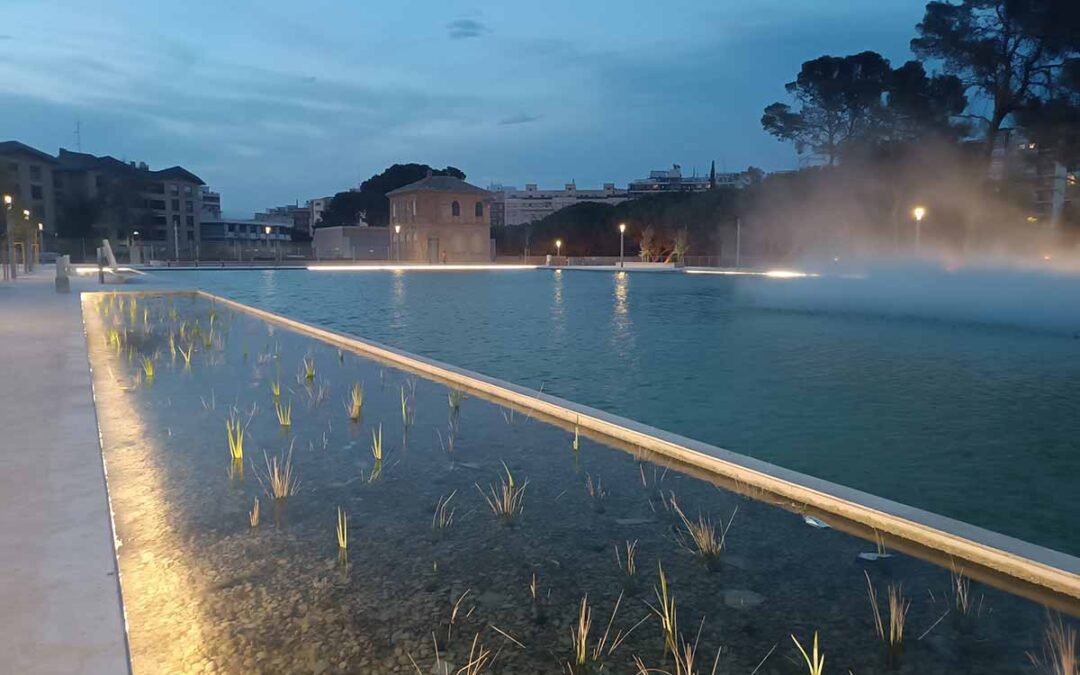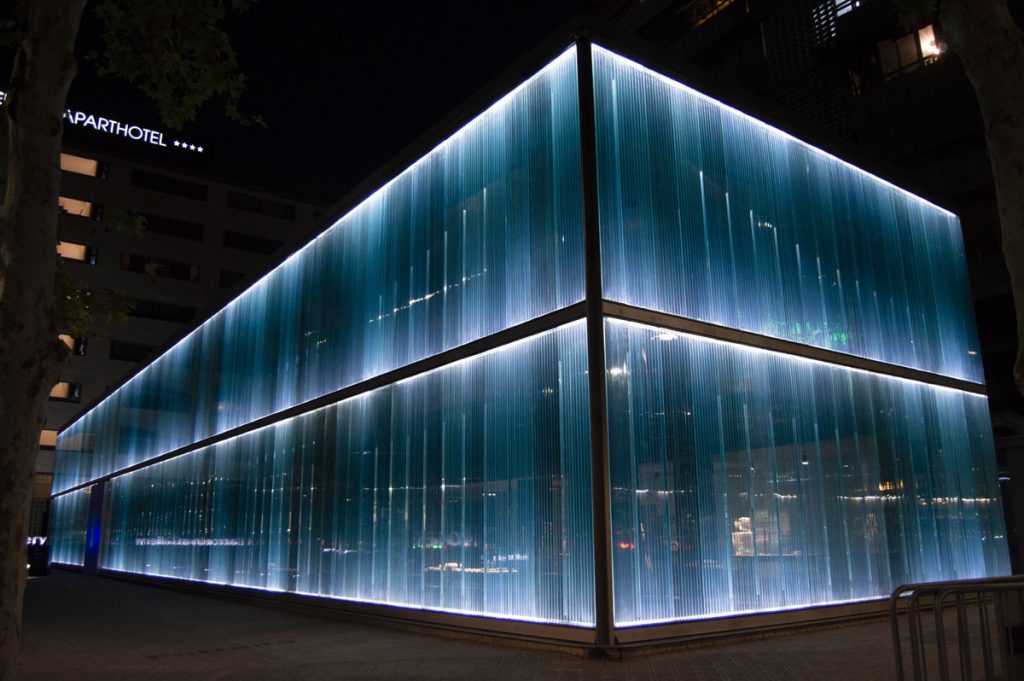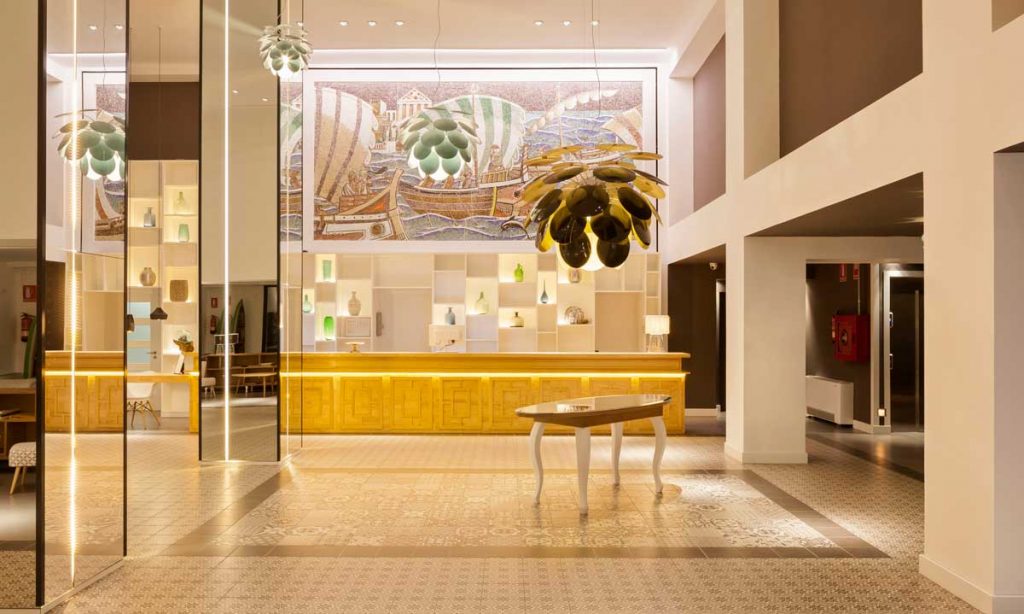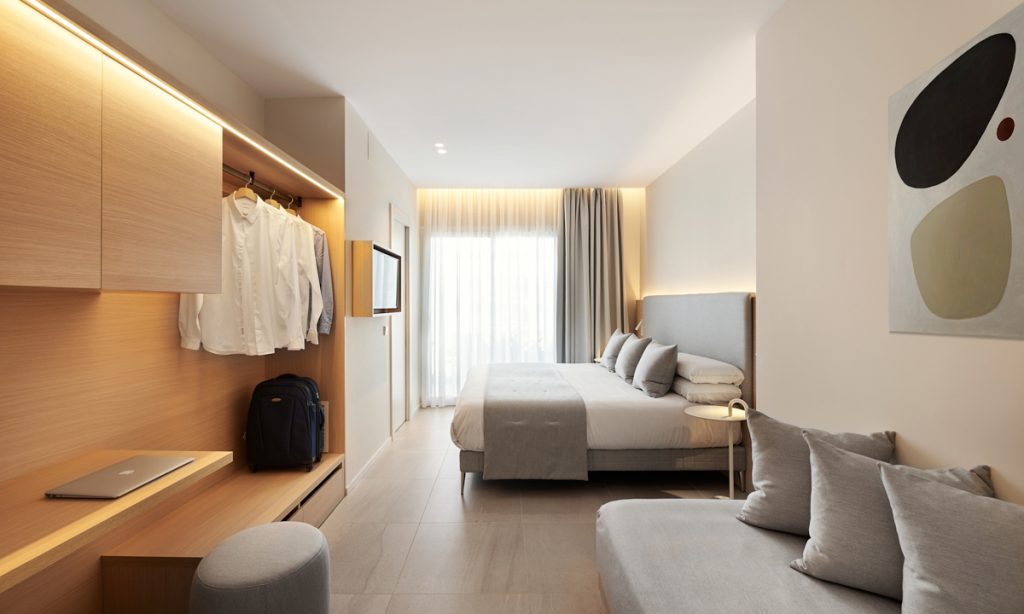
The bedroom is the first room we see when we wake up and the last one we see when we close our eyes; we start and finish each day between its four walls. This reason alone means we should take special care when designing its lighting. However, we often pay little attention to it, beyond applying run-of-the-mill lighting solutions such as placing fittings on both sides of the bed and having diffuse ambient lighting. There are many more resources we can use to help create more personalized and appropriate lighting that match our interior design and requirements.
Ideally, bedroom lighting should be bright and energizing in the morning and intimate and atmospheric at night. But there are nuances that depend on how we use the room throughout the day: Do we read in bed or somewhere in the room? Do we have a wardrobe or dressing area? Is there a TV in the bedroom? If it is a couple’s bedroom, are they both going to sleep and wake up at the same time? The design of layers of ambient, task and accent lighting, together with the use of lighting controls are the main tools enable us to adapt the lighting to the needs and lifestyle of each customer, and of course the design and personality of each space. In this context, linear leds provide interesting solutions and details for bedroom lighting, whatever style we choose, as we will see below.
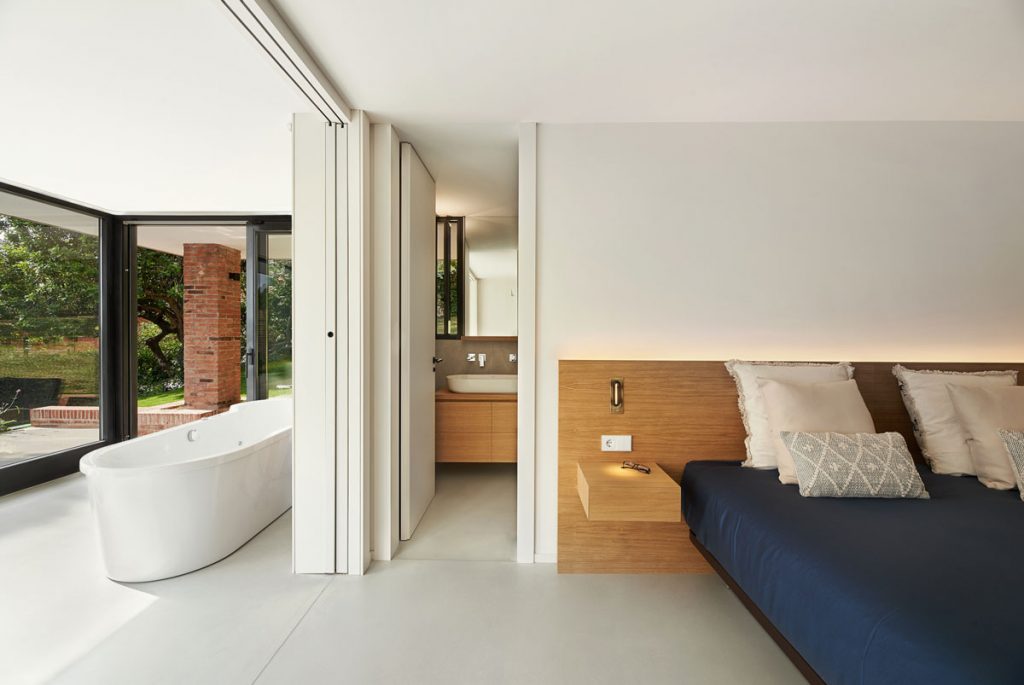
Lighting layers in the bedroom
Ambient or general light is the base layer of well-designed bedroom lighting. It should give soft, wide-range lighting that complements natural light. There are many ways to achieve this, whether with decorative ceiling or standing fittings or by using indirect light provided by led strips built into false ceilings, sconces, or perimeter curtains. An interesting solution for this type of lighting is to use leds with adjustable colour-temperature changes, such as Lluria’s Titan Double White, which can emit several shades of white between 2400K and 6000K and adapt the atmosphere to every moment of the day.
Good ambient lighting is the basic lighting that connects to the other lighting layers – the task layer and the accent layer – which will be used for other typical bedroom tasks such as reading, watching TV or dressing.
The reading light usually can usually be resolved using focal or diffused light fittings next to the bed or in the reading or study corner.
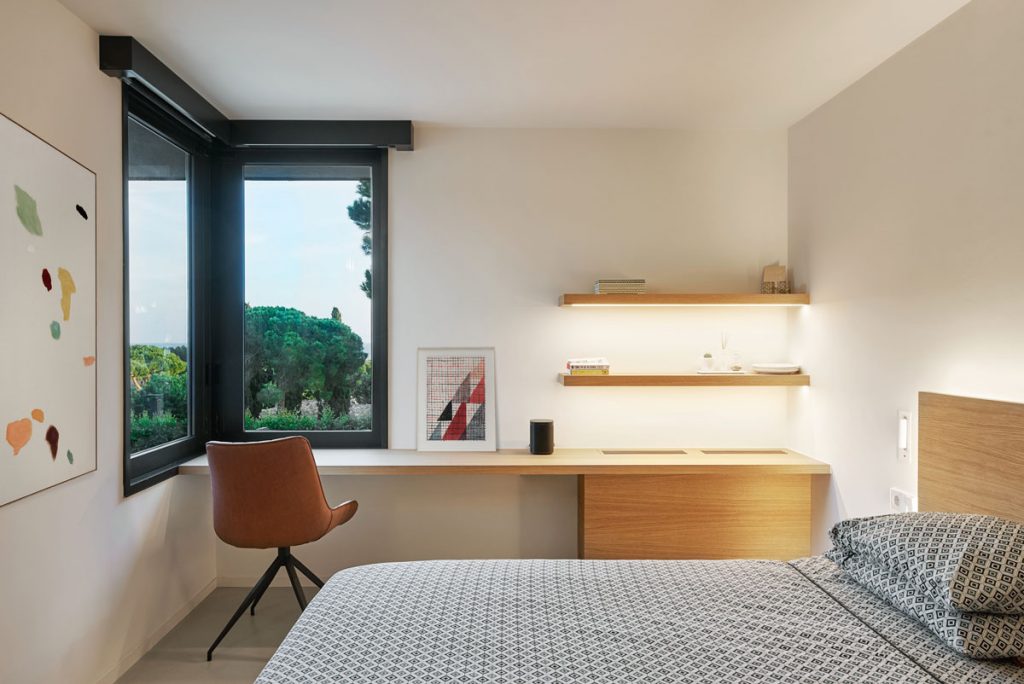
General lighting may be sufficient for dressing, but customers are increasingly aware of the importance of a good task light in the dressing area and request specific, front and diffuse lights close to the mirror and built-in lights in the cabinets that sorting, looking at and locating clothes. Both needs can be solved using linear leds, which are increasingly refined and adapted to the various types of mirrors, cabinets and dressing rooms. The range of Lluria’s sizes, profiles and optics means we can configure specific fittings for each application.
Accent lighting often adds personality and emphasis to a corner or detail of the room, often through accent lighting or even decorative lighting. An interesting solution provided by linear leds can be found by integrating them into shelves to create lighting effects that highlight books or decorative objects. In short, the more layers of lighting we have in the room, the more variety and flexibility we can achieve, as is the case in other rooms in the house. The bedroom, moreover, has a peculiarity. Everything revolves around a piece of furniture, the bed, of standardized dimensions and that allows conditions the distribution of the space. Now, we’ll look at how we can light this area.
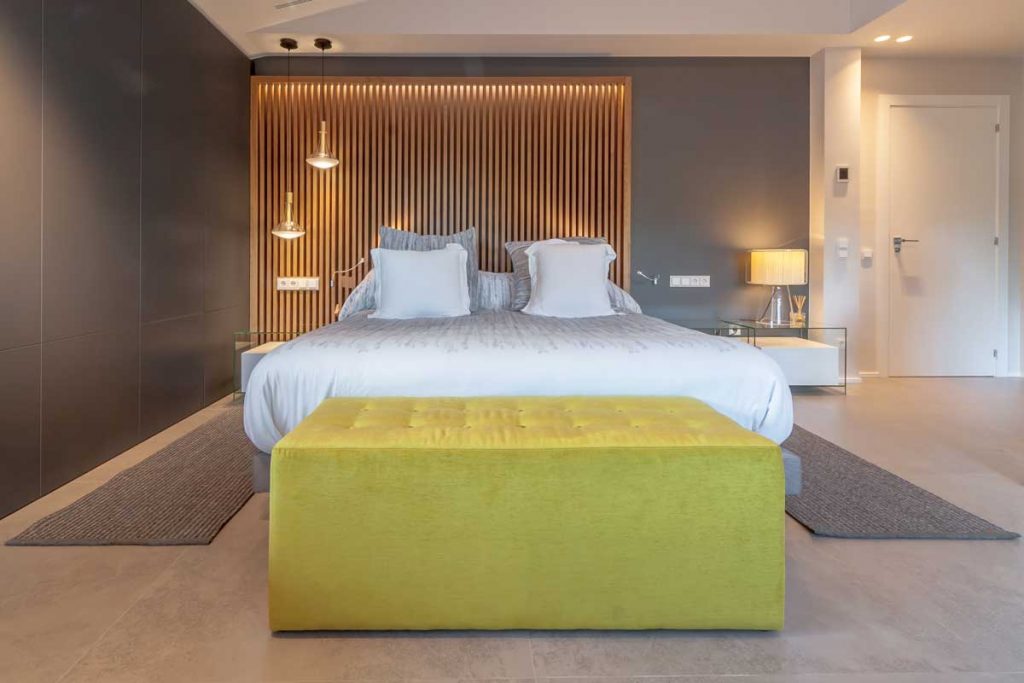
The bed, the functional and visual focus of the bedroom
The double bed is usually the largest piece of furniture in the bedroom and one of the largest pieces of furniture in the house. Sometimes we want to highlight it theatrically with accent lighting, but the most common thing is that the bed is not lit up by direct lighting, but by light that surrounds or frames it. This is usually provided by the lights in the bedside table areas (wall lights, tables, hanging lights or a combination), which are found in almost all bedrooms. Although their position means their primary function is to provide reading light on both sides of the bed, they often also serve as elements that frame it and define its personality.
But to highlight the bed, once again linear leds come to our help. Built into the bed head, or under the bed and even bedside tables, they give nuanced light that can add a special touch to different layers of lighting. For example, indirectly lit bed heads can provide general ambient light or complement the reading light; lighting under the bed or a bedside table is ideal as signal lighting while generating a framework of light that places the visual accent on the bed itself.
Another unique aspect of the “bed area” is that it also functions as a control centre from which lights, curtains and television can be controlled. It is achieved by simple switches or by more complete control systems.
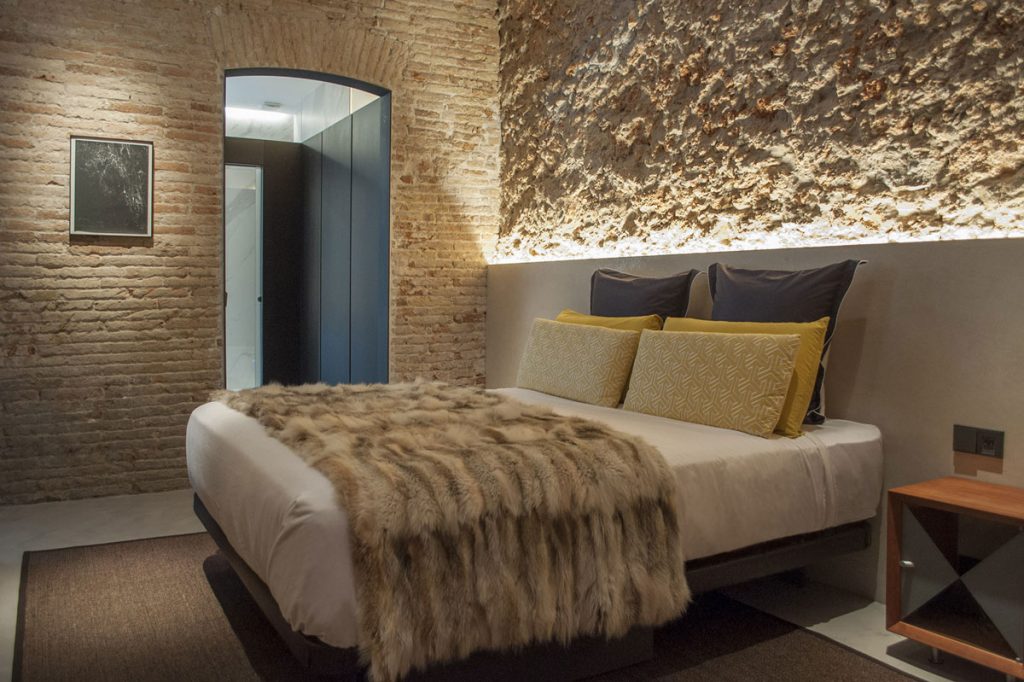
Improving sleep quality
Since sleeping is our main activity in the bedroom, we should ask ourselves whether the lighting is ideal for a good night’s sleep. However as much as we may love artificial light, we sleep best in a completely dark bedroom. If we wake up at night to use the bathroom, a small signal light, of extremely low colour level and temperature, can be useful for moving around safely. Led lines hidden from sight under the bedside table or bed, with a colour temperature of 2400K or lower and regulated to a minimum, are an excellent solution. But while we sleep, the total absence of light helps us get a deep and refreshing sleep. Equally important is the light we are exposed to before bedtime. Higher light levels and longer wavelengths have been shown to suppress melatonin, the hormone that helps regulate the sleeping and waking cycle. Therefore, using soft lights and warm/reddish tones before bedtime can help us rest better.

